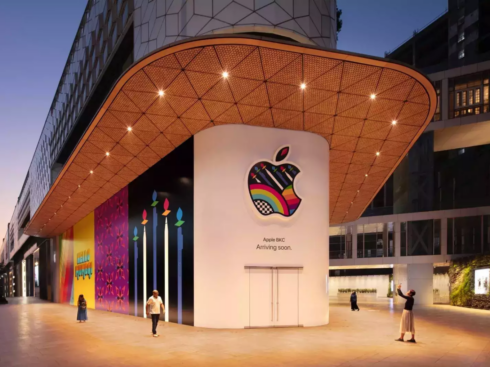
SUMMARY
- Digital Technology Is Continuing To Redefine Our Organization And The Nature Of Work
- Individual Professionals Can Be More Comfortable With Disparate Technologies, Solutions, Specific Applications, And Means Of Communication Such As Hangout, Facetime, And Whatsapp
- We Are Gradually Traversing Into A Future Where Digital Technologies Are Becoming A Core Component Of Not Only How We Work, But Also Our Day-to-day Lifestyles
Digital technologies have today redefined how everything was conventionally done in the past, including day-to-day endeavors at our workplaces. This now-ubiquitous trend is becoming more prevalent as we continue to witness more influx of the state-of-the-art technologies to an organization’s core infrastructure.
So, as digital technologies continue to redefine our organizations and the very nature of work that we do, let us have a look at the trends that are dynamically shaping our workplaces, and with it, the future of how we work.
Here are some of the biggest trends emerging on a cross-industry level vis-à-vis digital workplaces:
Remote Operations
As more youth, or in other words millennials, enter and contribute to the active global workforce, their dynamic working styles and work management is also registering its presence amongst organizations. This trend is being complemented with increasing digitization and proliferation of technology within day-to-day lifestyles of working professionals. Given this, remote working and work-life balance has emerged as one of the most basic requirements that the present-day employees now demand from their employers.
Progressive enterprises are also taking the cues from this trend, and are looking at it as a means to boost satisfaction, productivity, and collaboration of their employees. For instance, an employee will more readily accept an urgent virtual interaction with a client after work hours if he or she is given the liberty to work remotely, say from home and simultaneously take care of his or her newborn throughout the day. This results in frictionless operations while also increasing the work-life balance of the employees.
The original idea behind having workplaces is to converge all of an organization’s resources, including human resources, to help the entire organization achieve a collective goal through collaboration, which can effectively be met by leveraging this approach.
Smart Workplaces
Efficiency is the veritable key for businesses to differentiate themselves from the closest competitor in the market. But productivity (of employees and infrastructure), which directly affects efficiency of a business organization, is often on the receiving end due to mismanagement of resources. Lately, IoT technology, in addition to other IT solutions, has proved itself to be quite effective in eliminating such bottlenecks. This helps in driving greater fluidity into operations and unlocks the true potential of a business organization.
For instance, RFID-based tags can recognize an employee vehicle and automate the opening and closing of car parking barriers to bring greater time efficiency. If that particular employee is running short on time for a meeting aligned away from his or her usual place of parking, the monitors can instruct the professional to find the closest elevator and reach there on time. Similarly, beacons, sensors, and actuators can be, and are being, used for wide-ranging processes to improve the overall efficiency of organizations.
Employee Empowerment & Enrichment
Today’s businesses, which are increasingly becoming digital, are also recognizing the fact that individual professionals can be more comfortable with disparate technologies, solutions, specific applications, and means of communication (such as hangout, FaceTime, WhatsApp, etc.). The need of the hour is to reach quantifiable end results and enhance KPIs to ultimately have a unified collaboration, instead of unified processes or communications, which can directly or indirectly hamper these KPIs.
An employee might even have a desire to work using his or her own laptop, instead of a company-provided device, so that it is easier for the person to manage work and personal life using a single device. It is anticipated that employees will gradually be given the freedom to choose their own solutions, applications, and devices using concepts such as BYOA (Bring Your Own Application) and BYOD (Bring Your Own Device). But, this will again transfer the onus onto IT professionals to shun the approach of merely tracking the uptime of the environment, and will mandate them to understand the functioning of these dynamic modules vis-à-vis the overarching objective, while also ensuring that there are no leakages and associated vulnerabilities.
Evolving communication
Video technologies are facilitating seamless communication that meets and at times, exceeds our expectations. Today, the developments around Augmented Reality and Virtual Reality give us a strong indication of how our workplaces in the future might possibly look. As an example, critical resources have to travel to offshore destinations for business meetings and brainstorming initiatives where their mere presence and inputs are required.
The whole endeavour, however, consumes substantial time and cost of travel and causes productivity loss. To counter this challenge, we can see an evolved version of Augmented Reality and Virtual Reality along with its integration amongst global organizations. Doing so will create a digital representation of the original environment, such as a meeting room, and help accomplish the principal objective of such endeavours.
Project-based employment will thrive
Every organization faces several constraints in terms of workforce and infrastructure, which creates room for inconsistency and creates friction in business operations. Employers will increasingly adopt the project-based route by hiring contractors and MSPs to outsource short-term and long-term work commitments. This trend is also driven by the increased demand to bring greater specialization, influx of cloud infrastructure, and the need to increase business output while decreasing the overall overheads.
The narrowing-down approach also enables businesses to scale or downsize their operations with greater flexibility as and when they need, while decreasing the workload of its in-house resources and augmenting its operational efficiency. It also creates better synchronization of a company’s across-the-board processes and boosts the overall resource utilization.
Use of AI for time-intensive jobs
Exhaustive, time-consuming, and repetitive tasks are one of the most significant factors that cause fatigue amongst employees while also introducing a layer of errors and omissions within work. The next wave of automation will drive all of the repetitive, exhaustive, and time-consuming tasks and free the organization’s resources, so that they can focus better on other business functions where their individual area of expertise can be tapped, rather than managing repetitive and fatigue-causing operations on a day-to-day basis.
Here, the cognitive capabilities of Artificial Intelligence will also become pivotal and bring greater precision as well as efficacy and help in adopting the most optimal tactic for in-house operations and customer-facing challenges.
Enhanced organization wide security
The burgeoning IT infrastructure is simultaneously increasing the network perimeter that needs to be protected. A recent report by Microsoft and Frost & Sullivan indicated that direct, indirect, and induced costs incurred by businesses in Asia-Pacific will potentially reach $1.75 trillion this year.
It also indicated that such cyberattacks had tangible job losses across seven out of ten (67 percent) organizations that experienced it. Today, a business enterprise not only has to defend its core infrastructure from external and internal threats, it also needs to ensure that the comprehensive network comprising individual nodes are protected both as a singular and as a collective entity, since any of these nodes can be used by a cyberattacker to penetrate deeper into the network. Going forward, enterprises will focus more on data and network security to retain business value and employment as they lead digital transformation.
We are gradually traversing into a future where digital technologies are becoming a core component of not only how we work, but also our day-to-day lifestyles. As the adoption of digital technologies across various industries increases, it is equipping business organizations that are able to adapt, and utilize futuristic solutions for their best interests to gain a veritable edge against their competitors. This is enabling them to increase throughput without incremental cost of resources, risks, and infrastructure. It can be safely said that the future seems to be bright, but only for those organizations that recognize the ongoing trends and align themselves aptly according to them.


























